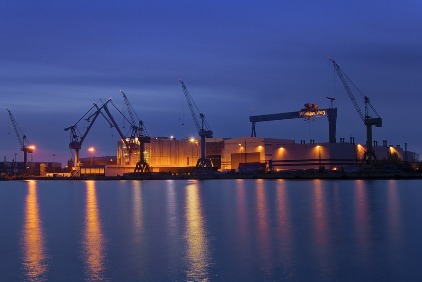India’s changing maritime infrastructure has helped India’s ranking on World Bank’s ease of doing business index by improving from 100 in 2017 to 77 in 2018 and has made news. The IT-enabled integration of India’s maritime infrastructure is changing the entire look of the economy. While the Port Community System (PCS), an e-commerce portal, was introduced by the Indian Ports Association (IPA) in record time, efforts are already underway to shift to PCS1x, an upgraded version of the programme, which would allow India to move up further on the ease of doing business index.
A shipping ministry official said that such a big infrastructure push is a rare happening; the PCS has revolutionised the Indian maritime sector.
PCSIx, a cloud-based new generation system, brings together the different stakeholders of the maritime sector on a single platform, facilitating government-to-business, business-to-government and business-to-business transactions even as it ensures extreme levels of cyber security. As PCS’ architecture is built on an open platform, the technology can integrate any new concept or module available in the industry without disturbing the existing ecosystem. This unique feature offers the system unlimited scope for growth and expansion.
Besides providing the maritime industry and the authorities a single-window platform, PCS1x offers the stakeholders a user-friendly mobile application, event-based notification and alerts, an interactive dashboard, capability of
PCS-to-PCS integration (Indian PCS with international PCS) and a 24×7 help desk for location support. It enables trade to have improved communication with the customs, which has already embarked on an Application Programming Interface (API) based architecture, allowing for real-time interaction. The platform ensures an improvement in payment cycle, transparency in transaction cycles, and detailed tracking of vessels and berthing schedules. It can be integrated with the Gate system with RFID (radio frequency identification), can produce e-copy of reports and notices and be used for truck and trailer tracking.
Various ports are in the process of adopting PCS1x at present and these include the country’s minor ports. The Kolkata Port Trust (KoPT) has seen its operational efficiency improve several-fold since it got integrated with the cloud-based platform—technological upgrade has special relevance for riverine ports like Kolkata and Haldia which need the tide for ship movement, a limitation that has caused huge congestion at the docks. Besides quicker customs and other clearances, an integrated chain of logistics has reduced the turnaround time and pre-berthing detention for ships—since demurrage in the case of pre-berthing detention has to be paid in foreign exchange, reduction in pre-berthing detention not only saves the importer costs but also eases pressure on the exchequer.
At a roadshow for PCS1x in Kolkata, Vinit Kumar, KoPT chairman, said that through the one national portal, where users can register themselves and transact with port authorities and other agencies, customs and other port documents would be made online.
A committee – with representatives from the shipping ministry, customs department, CONCOR, IPA, civil aviation ministry, department of industrial policy and promotion, container freight stations, road ministry and CSLA (communications security logistics activity) – that is overseeing the shift from PCS to PCS1x wants to expand its ambit, bringing eight more maritime stakeholders onto the platform. These include inland waterways, stakeholders involved in coastal movement, empty yard, freight forwarders, ship chandlers, bunker suppliers, non vessel operating common carriers and the directorate general of lighthouses and lightships.
Source: Financial Express

